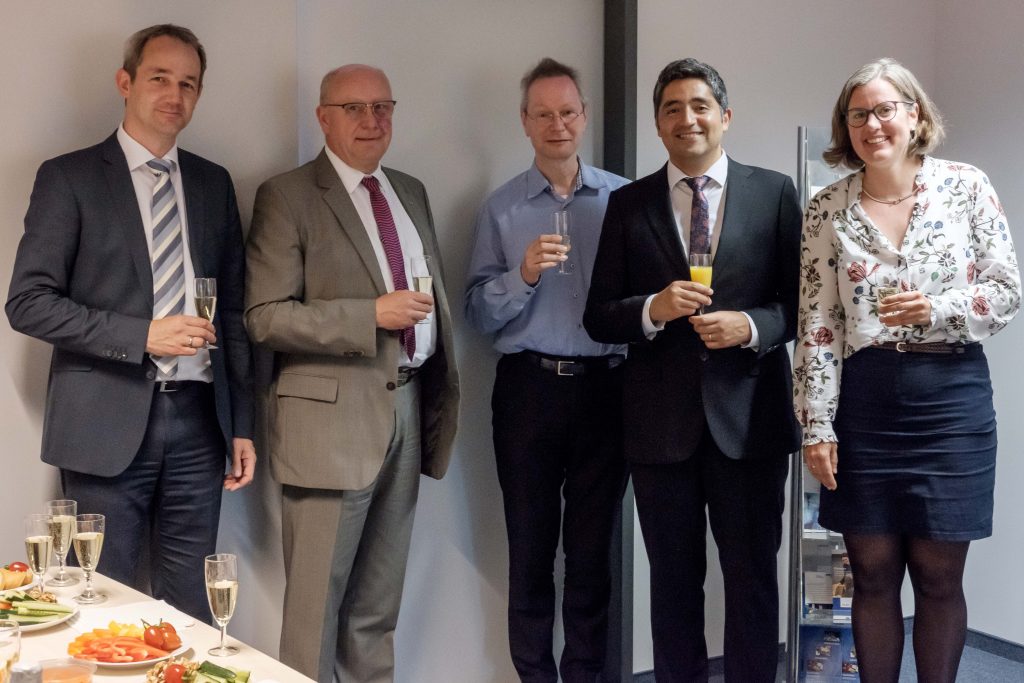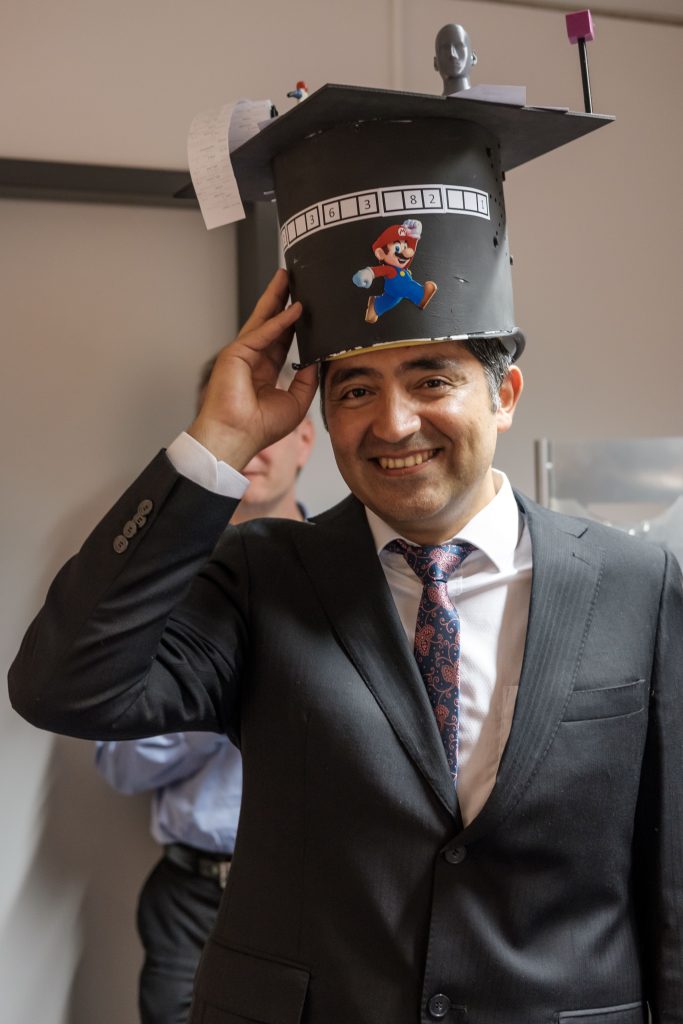Am 24. Mai 2019 hat Herr Rhoddy Angel Viveros Muñoz seine mündliche Promotionsprüfung erfolgreich abgeschlossen.
Herr Viveros Muñoz promovierte über das Thema:
“Speech perception in complex acoustic environments – Evaluating moving maskers using virtual acoustics”
Abstract:
Listeners with hearing impairments have difficulties understanding speech in the presence of background noise. Although prosthetic devices like hearing aids may improve the hearing ability, listeners with hearing impairments still complain about their speech perception in the presence of noise. Pure-tone audiometry gives reliable and stable results, but the degree of difficulties in spoken communication cannot be determined. Therefore, speech-in-noise tests measure the hearing impairment in complex scenes and are an integral part of the audiological assessment.
In everyday acoustic environments, listeners often need to resolve speech targets in mixed streams of distracting noise sources. This specific acoustic environment was first described as the „cocktail party“ effect and most research has concentrated on the listener’s ability to understand speech in the presence of another voice or noise, as a masker. Speech reception threshold (SRT) for different spatial positions of the masker(s) as a measure of speech intelligibility has been measured. At the same time, the benefit of the spatial separation between speech target and masker(s), known as spatial release from masking (SRM), was largely investigated. Nevertheless, previous research has been mainly focused on studying only stationary sound sources. However, in real-life listening situations, we are confronted with multiple moving sound sources such as a moving talker or a passing vehicle. In addition, head movements can also lead to moving sources. Thus, the present thesis deals with quantifying the speech perception in noise of moving maskers under different complex acoustic scenarios using virtual acoustics.
In the first part of the thesis, the speech perception with a masker moving both away from the target position and toward the target position was analyzed. From these measures, it was possible to assess the spatial separation benefit of a moving masker. Due to the relevance of spatial separation on intelligibility, several models have been created to predict SRM for stationary maskers. Therefore, this thesis presents a comparative analysis between moving maskers and previous models for stationary maskers to investigate if the models are able to predict SRM of maskers in movement. Due to the results found in this thesis, a new mathematical model to predict SRM for moving maskers is presented.
In real-world scenarios, listeners often move their head to identify the sound source of interest. Thus, this thesis also investigates if listeners use their head movements to maximize the intelligibility in an acoustic scene with a masker in movement. A higher SRT (worse intelligibility) was found with the head movement condition than the without head movement condition. Also, the use of an individual head-related transfer function (HRTF) was evaluated in comparison to an artificial-head HRTF. Results showed significant differences between individual and artificial HRTF, reflecting higher SRTs (worse intelligibility) for artificial HRTF than individual HRTF.
The room acoustics is another relevant factor that affects speech perception in noise. For maskers in movement, an analysis comparing different masker trajectories (circular and radial movements) among different reverberant conditions (anechoic, treated and untreated room) is presented. This analysis was carried out within two groups of subjects: young and elderly normal hearing. For circular and radial movements, the elderly group showed greater difficulties in understanding speech with moving masker than stationary masker.
To summarize, several cases show differences between speech perception in noise with moving maskers than stationary maskers. Therefore, a listening test that presents moving maskers could be relevant in the clinical
assessment of speech perception in noise closer to real situations.


Das ITA gratuliert sehr herzlich!!

